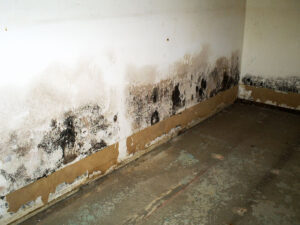Water damage can cause various losses. It can cause a number of destructive processes, including the rotting of wood, mold growth, and bacteria. Once water damage occurs, you will need to clean up and document the damage. You should contact your insurance company for help if you suspect your home has been damaged by water.

Water damage is a problem that can occur anywhere in your home. It can be caused by broken pipes, ice dams on the roof, and poor exterior grading. Water damage can also cause stains, warping, and even mold growth. It is important to have a home inspection performed by a professional to determine the extent of the damage. However, if you suspect water damage, there are some simple ways to tell.
Water can wreck havoc on your home if it is not diverted quickly. When assessing water damage, look for signs of cracks and leaks, especially around pipes. If you see cracks, there could be a blockage. Also, look for signs of mud spatters or paint peeling vertically.
While water damage can be a costly repair, it can be easily avoided. Identifying the signs of water damage early will help you avoid mold infestation and save money on renovations. Water damage can be caused by a flood, leaky pipes, or cracks in the foundation. If you neglect to repair water damage quickly, mold will likely grow in the home, posing a serious health risk to everyone living in it.
If you’re buying a home and it shows signs of water damage, a home inspection should be scheduled. This will ensure that your home inspector will note any signs of water damage and will give you an accurate estimate of the cost of repairs. You can use the estimates to negotiate a lower price with the seller. If you don’t get a low estimate, you should avoid purchasing the home.
Filing a claim with your insurance company after water damage is a critical process. The first thing you need to do is document the damage. Make sure you document personal items, damaged equipment, and the cause of the damage. It is also important to take pictures of the damaged areas.
Once you’ve gathered the necessary evidence, the insurance company will send an adjuster to your home to assess the damage. The adjuster may be an employee of the insurance company or an independent contractor. You may also choose to use a public adjuster. This person will work for you, and you will pay a fee for their services. This fee is usually a percentage of the settlement amount.
Water damage claims can be time-consuming and complex. Often, the damage is not visible, and it may be difficult to prove. Public adjusters are experienced in handling water damage claims. The company will contact you within a few days and explain the process to you. If they deny your claim, they will give you written reasons as to why.
Water damage is caused by a variety of situations, including burst pipes or plumbing leaks. It can also result from a storm or a sewage backup. Regardless of the cause of the damage, water damage is a major concern for homeowners. It is imperative to act quickly, document the damage, and provide evidence to your insurance company.
If you have a flood or other water disaster in your home, the initial steps should be to evacuate the building and shut off electricity and water. While clean water from a storm or leaky pipe is generally safe to touch, it can harbor mold and other toxins when it sits in a building for an extended period of time. Similarly, sewage backup and contaminated water pose extreme health risks and should be cleaned up by professionals.
Water damage is common in many households, and it is best to take quick action to minimize further damage. Water damage can destroy furnishings, drywall, and carpet. It is also important to get the area dried quickly to prevent mold from growing. It can take up to 24 hours for mold to form, so it’s vital to act quickly to minimize the cost of the cleanup.
After water damage, it is imperative to clean up all water-damaged areas. To minimize the risk of mold and mildew growth, you can use towels to absorb small amounts of water. In addition, you should use a water-sucking water vacuum to remove larger water spills. After the water damage cleanup, you should create a drying zone for the affected areas.